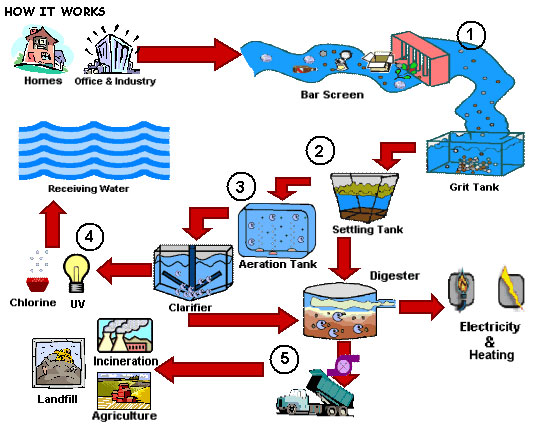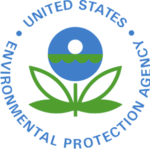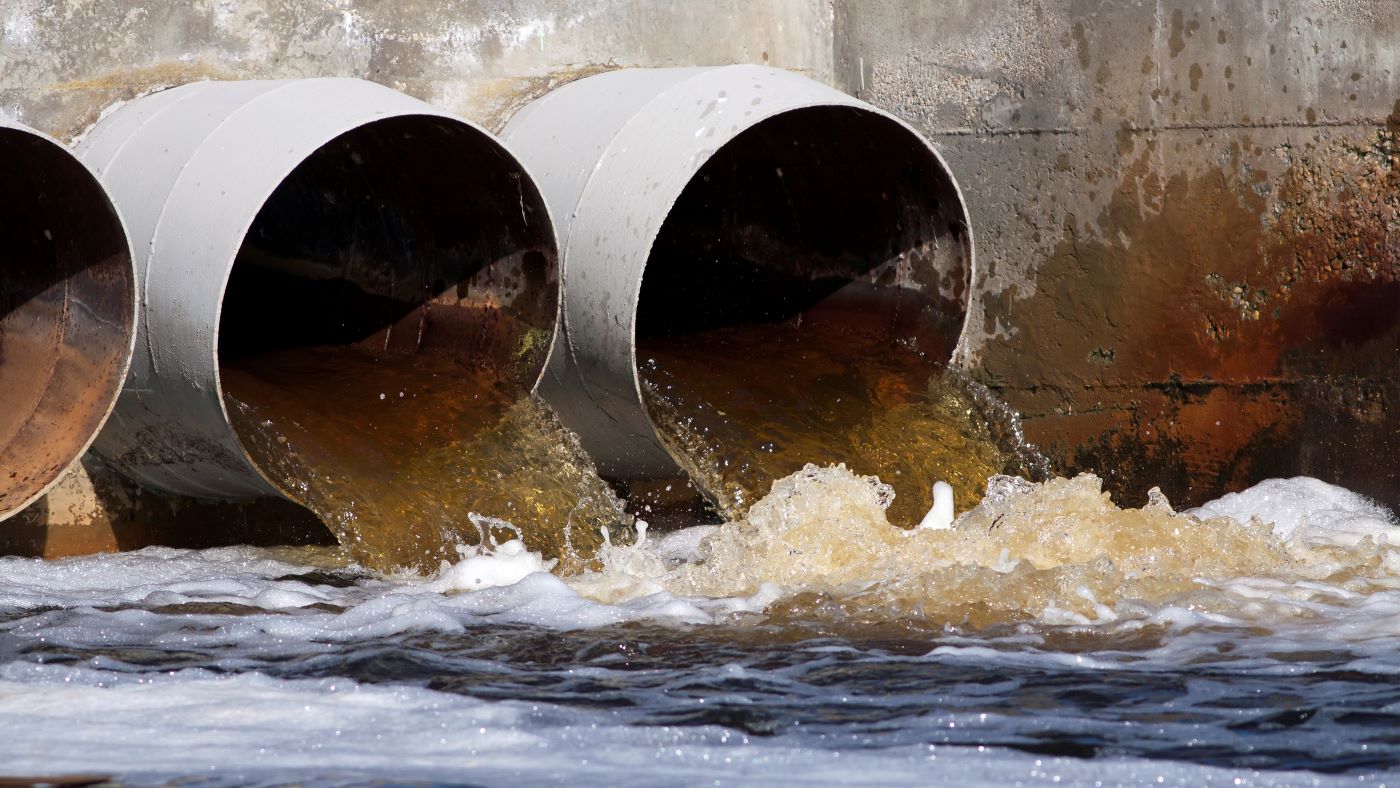Wastewater is any water that has been affected by human use. This can include domestic water, commercial water, agricultural water, industrial water, and stormwater. Wastewater is not defined as a specific class of contaminant compounds, but can include elevated concentrations of nutrients, fats, oils, or greases, pathogens, or other suspended solids.
Environmental Impacts from Wastewater
If not properly treated, discharged wastewater can negatively affect human health and the environment. Wastewater has the potential to impact fish and wildlife populations, human recreation in water bodies, closures, restrictions on fish and shellfish harvesting, and contamination to drinking water. The causes of these risks include the following:
- Decaying organic matter in wastewater can deplete dissolved oxygen in freshwater bodies so aquatic life cannot survive.
- Excessive nutrients, such as phosphorus and nitrogen can cause eutrophication.
- Bacteria, viruses and pathogens can affect human health and lead to restrictions to human refractions and pollute drinking water.
- Heavy metals, such as mercury, lead, cadmium, chromium and arsenic can have toxic effects on fish and other aquatic species.
Wastewater Treatment
Wastewater treatment includes two (2) major components, primary and secondary treatment. The objective of primary treatment is to remove the suspended solids and large particles. Primary treatment can include screening, settling tanks, and grit tanks. Following primary treatment, the remaining water, effluent, undergoes processes through Secondary Treatment. This includes biological or chemical processes to purify water, which may include aeration, disinfection, ozonation, or application or ultraviolet (UV) light. Municipal wastewater treatment systems test for physical properties, solids, biologicals, and chemicals before discharging into the environment. Industrial facilities are often required to pre-treat wastewater before discharging into a municipal sanitary sewer system. Treatment for industrial wastewater may include alternative treatment techniques and advanced water quality testing requirements.

Raw sewage includes the organic and inorganic solids that were separated out of effluent during primary and secondary treatment. These solids are further treated outside of primary and secondary treatment to decrease pathogen content, increase pH, and stabilize chemicals. Treatment options include anaerobic digestion, aerobic digestion, and alkaline stabilization.
Regulation of Wastewater

Wastewater management is regulated under the U.S. Environmental Protection Agency (EPA) Clean Water Act’s National Pollutant and Discharge Elimination System (NPDES) program. Under the NPDES program, certain facilities are required to pretreat wastewater to protect local sanitary sewers and wastewater treatment plants. Industrial site wastewater is subject to effluent guidelines that set national wastewater discharge standards and were developed by the EPA. Effluent guidelines and water quality standards are specific to the type of industrial facility or site. Currently, there are fifty-nine (59) categories for industrial facilities with designated effluent guidelines. These regulations apply to approximately 40,000 facilities that discharge directly to water bodies and 129,000 facilities that discharge to municipal sewage treatment plants.
Wastewater Remediation and Response
When a release of wastewater has occurred from a point source without permitting, the first objective is to protect human health. Proper personal protective equipment (PPE) is necessary for any personnel conducting remediation efforts. Chemical disinfection is typically used to sterilize non-porous surfaces. In instances in which wastewater impacts soil, applying lime or excavation of grossly impacted soils may be conducted. The Institution of Inspection Clean and Restoration Certification (IICRC) Standard Reference Guide S500 was published in 2006 to provide information about the restoration of water-damaged structures and contents. This reference guide was developed in order to provide a protocol for remediation and restoration of water damage and specifically references how varying amounts of wastewater contamination will affect remediation. This document serves as a guide to water damage restoration professionals and environmental professionals who assess water intrusion and prepare remediation protocols.
How Can VERTEX Help?
VERTEX has a team of environmental professionals that have the expertise to opine on the cause, origin, and timing of releases, determine the necessary response activities, the extent of the impacts, identify any potentially responsible parties, determine the appropriate remedial efforts and regulatory reporting necessary to correct the environmental condition, and experience to evaluate costs for reasonableness. VERTEX has a proven record negotiating with contractors to ensure that remedial jobs are completed efficiently and achieve regulatory closure. VERTEX’s strategic nationwide locations allow us to mobilize on behalf of our clients to identify and mitigate challenges associated with pollution claims.
To learn more about VERTEX’s Environmental Claims Consulting or Remediation services or to speak with an Environmental Expert, call 888.298.5162 or submit an inquiry.




